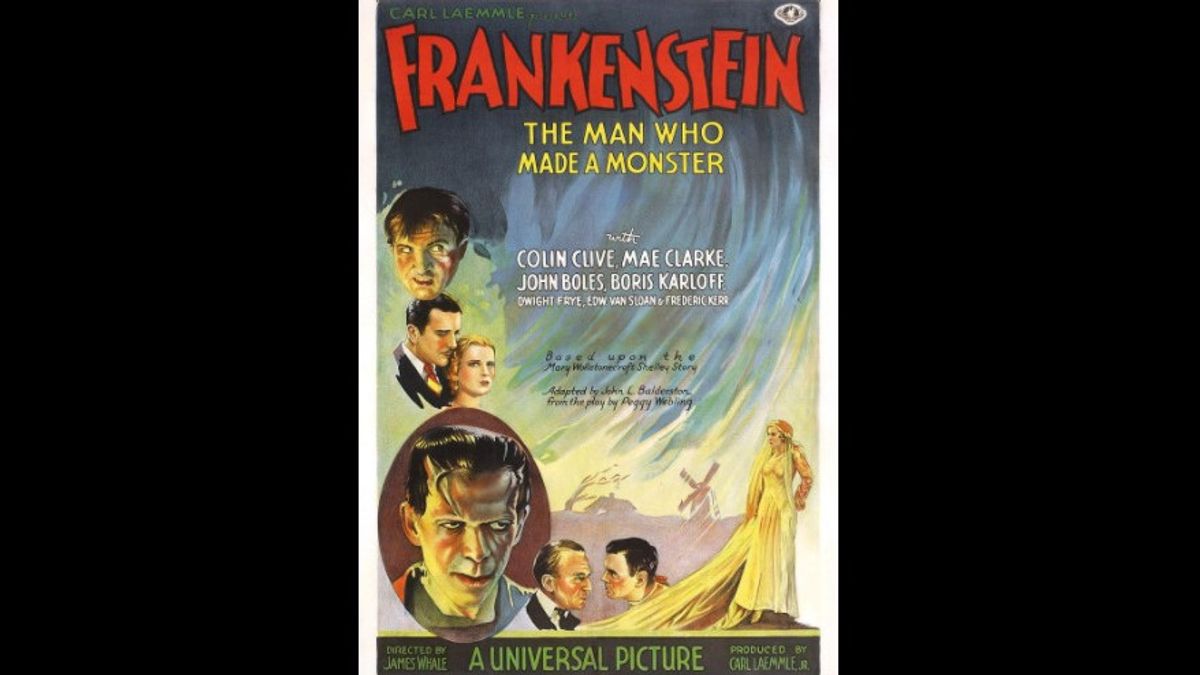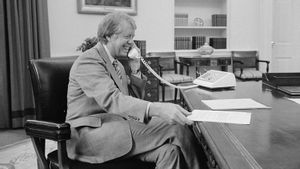JAKARTA - On November 21, 1931, Frankenstein, an American horror film, was released. Frankenstein is based on an adaptation of Mary Wollstonecraft Shelley's 1818 novel Frankenstein; or, The Modern Prometheus. The film depicts a monster who lives from the pieces of a corpse played by Boris Karloff. The monster's stature had a flat head and protruding neck bolts. Frankenstein has become one of the most recognizable characters in film history.
To quote Britannica, Saturday 21 November, the film begins with a prologue in which the audience is warned about the terrible story that follows. In a castle in the Bavarian mountains, Dr. Henry Frankenstein (played by Colin Clive) and his hunchback assistant, Fritz (Dwight Frye), managed to piece together the human body from parts stolen from various corpses.
As they prepare to turn it on through the application of electricity, they are joined in the laboratory by former Frankenstein professor, Dr. Waldman (Edward Van Sloan), his fiancée, Elizabeth (Mae Clarke), and his friend Victor (John Boles).
Everyone who gathered begged Frankenstein to reconsider the experiment. Unbeknownst to Frankenstein, the brain that Fritz got for the monster was the brain of the criminal. After killing Fritz and Waldman in a violent rampage, the creature escapes from the castle. He then befriends a young girl (Marilyn Harris) in a nearby village but then accidentally drowns her in a lake.
As a result of the drowning of the woman, a village community mob formed and trapped the monster in a windmill. The creature was then burned by the mob and he was crushed in coals of fire.
The film gave birth to cottage industry sequels, including Bride of Frankenstein (1935) and Son of Frankenstein (1939), as well as several remakes. Scenes that were originally cut or censored from the film, such as the prologue and the drowning of young girls, have been restored. Makeup artist Jack Pierce, who was responsible for the monster's signature look, went on to create costumes for several other famous Universal Pictures creatures, including the main characters in The Mummy (1932) and The Wolf Man (1941).
Although only referred to as a "monster" in the novel, it is one of the historical customs that the film's monster name is so often confused with its father or symbolic creator, Dr. Frankenstein. Although in the film Dr Frankenstein is described as a genius, it does not close the appeal of his creatures. The monster turned out to be a greater star than the scientist who created it and since then the name Frankenstein has been synonymous with the monster, not the doctor.
Although previously there were other versions of Frankenstein films, including a production in 1910, a 1915 version called Life Without Soul and the Italian Master Frankenstein in 1920, none of them featured a memorable monster. Although this post-Frankenstein film inspired other films namely Whale: The Bride of Frankenstein (1935), Ghost of Frankenstein (1942) and many others, none has matched the power of Frankenstein released in 1931.
The Frankenstein film manages to portray a scientist tinkering with the powers reserved for God and a monster who is not completely evil, but also has sympathetic qualities.
The English, Chinese, Japanese, Arabic, and French versions are automatically generated by the AI. So there may still be inaccuracies in translating, please always see Indonesian as our main language. (system supported by DigitalSiber.id)










